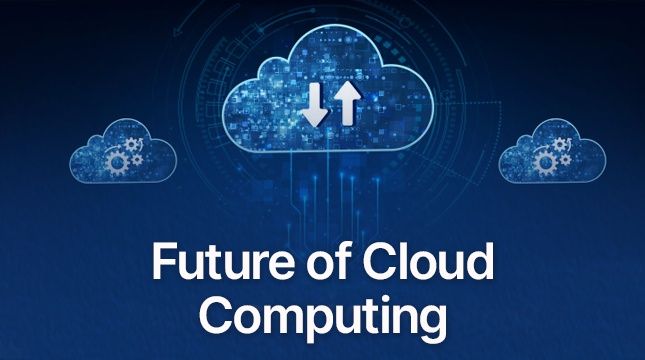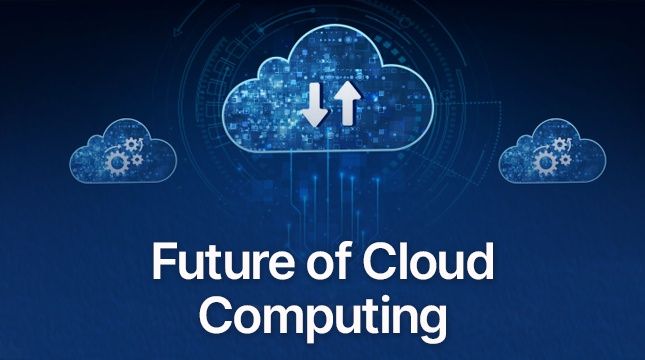Explore the top cloud computing trends and enterprise tools for 2025. Learn how cloud-native platforms, AI, and hybrid infrastructure are transforming modern business IT.
Cloud computing has become the cornerstone of digital transformation in enterprises. From cost savings to flexibility, cloud services empower businesses to innovate, scale, and stay competitive. In 2025, cloud platforms are evolving faster than ever with the integration of AI, serverless computing, and hybrid multi-cloud strategies. Whether you're migrating legacy systems or building cloud-native apps, understanding these trends is essential for enterprise growth.

Benefits and Limitations of Cloud for Enterprises
Benefits:
-
Scalability: Rapid infrastructure scaling without upfront hardware investment.
-
Cost Efficiency: Pay-as-you-go pricing eliminates capital expenditure.
-
Disaster Recovery: Built-in data backup and recovery solutions.
-
Collaboration: Cloud enables real-time collaboration across geographies.
-
Security: Major providers offer enterprise-grade security and compliance.
Limitations:
-
Data Sovereignty: Legal issues around data location and privacy.
-
Downtime Risks: Despite SLAs, outages can still occur.
-
Vendor Lock-In: Difficult to migrate once deeply integrated.
-
Cost Overruns: Without management, cloud bills can spiral.
Types of Cloud Services in 2025
-
Infrastructure as a Service (IaaS): e.g., AWS EC2, Google Compute Engine
-
Platform as a Service (PaaS): e.g., Microsoft Azure App Services
-
Software as a Service (SaaS): e.g., Salesforce, Google Workspace
-
Function as a Service (FaaS): e.g., AWS Lambda, Azure Functions
Latest Trends in Cloud Computing for Enterprises
1. AI Integration in Cloud Platforms
Cloud services are now powered by AI for intelligent automation, monitoring, and analytics. Tools like Google Cloud AI and AWS SageMaker are driving this shift.
2. Hybrid and Multi-Cloud Strategies
Enterprises prefer a hybrid setup to balance public and private clouds. Tools like VMware Tanzu and Red Hat OpenShift make multi-cloud orchestration seamless.
3. Serverless Computing
Developers can run applications without managing infrastructure using serverless tools like AWS Lambda and Google Cloud Functions.
4. Sustainability in Cloud
Green data centers and carbon-neutral commitments from Microsoft Azure and AWS are pushing eco-friendly operations.
5. Industry-Specific Cloud Solutions
Cloud services tailored for sectors like finance, healthcare, and manufacturing are seeing massive adoption. Examples include IBM Cloud for Financial Services.
Key Features to Consider When Choosing a Cloud Platform
-
Security & Compliance: Look for ISO/IEC certifications and encryption capabilities.
-
Scalability: Auto-scaling features and multi-region deployment.
-
Integration Support: Compatibility with existing enterprise tools (ERP, CRM).
-
Performance Monitoring: Real-time dashboards and diagnostics.
-
Support & SLAs: 24/7 technical support and strong uptime guarantees.
Top Cloud Computing Platforms for Enterprises
| Provider | Key Offering | Best For |
|---|---|---|
| Amazon Web Services (AWS) | Broadest service range | Scalable infrastructure |
| Microsoft Azure | Seamless Office 365 integration | Enterprise collaboration |
| Google Cloud Platform (GCP) | AI and machine learning focus | Data-heavy applications |
| IBM Cloud | Industry-specific compliance | Regulated industries |
| Oracle Cloud | Integrated with business applications | Large-scale ERP workloads |
How to Choose the Right Cloud Solution for Your Business
-
Assess Your Workloads: Identify applications suited for the cloud.
-
Set Budget Boundaries: Use cost calculators from providers.
-
Prioritize Security: Ensure compliance with industry regulations.
-
Compare Support Services: Review SLAs and customer feedback.
-
Test Before Full Migration: Use sandbox environments or trials.
Tips for Optimizing Cloud Use in Your Enterprise
-
Use cloud cost monitoring tools (e.g., AWS Cost Explorer).
-
Enable auto-scaling and right-sizing for resource efficiency.
-
Implement CI/CD pipelines for faster software releases.
-
Educate teams with cloud certification courses (e.g., Azure, AWS).
FAQs About Enterprise Cloud Adoption
Q1: Can I migrate legacy apps to the cloud?
Yes. Tools like AWS Migration Hub or Azure Migrate help lift and shift legacy apps with minimal disruption.
Q2: Is cloud computing safe for sensitive data?
Major providers comply with GDPR, HIPAA, and ISO standards. Encryption, IAM, and VPNs enhance security.
Q3: How can I avoid vendor lock-in?
Opt for open-source tools and containerized apps using Kubernetes to maintain portability.
Q4: Which cloud platform offers the best value for SMBs?
Google Cloud offers flexible pricing and generous free-tier services for small businesses.
Q5: What’s the ROI of moving to the cloud?
Enterprises often report a 30–50% reduction in IT costs and faster product release cycles post-cloud migration.
Conclusion: Making Cloud Work for Your Enterprise
Cloud computing is not just a tech upgrade—it’s a strategic enabler. By understanding current trends, evaluating leading tools, and adopting best practices, enterprises can unlock new efficiencies and innovations. The key is to plan carefully, choose wisely, and adapt as cloud technologies evolve.
